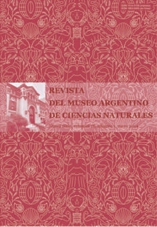Estudios polínicos del Cuaternario en las regiones áridas del sur de Argentina
Resumen
Up to 1980 Quaternary pollen analysis in the southern part ofSouth Americahas mainly concentrated on bogs and lake sediments in humid regions, i.e. the Patagonian Andes. But the vast dry lands of easternPatagoniacovered with steppe type vegetation, dwarf-shrubs in the semi-deserts and xerophytic Monte in the north-eastern parts also offer paleoecological archives such as dry lakes and salt-lakes in closed basins. During the last 15 years the author studied many profiles in this region not only for pollen but also other sediment proxies as i.e. salt, organic material and grain-size. One aim of the studies is to reconstruct climate parameters quantitatively by using multivariate statistics on the basis of correlations between modern pollen spectra and recent climate data. Concentrating on North-Patagonia it is now possible to reconstruct the yearly amount of precipitation for the last c. 14 ka BP. These results were interpreted in terms of paleo-circulation patterns. Ongoing investigation in southern Patagonia (Volcanic Region of Pali Aike) and the dry lands in north-west Argentina (Provinces of Salta and Jujuy) will provide further information about climate changes in the past, which can be used for the "scaling" of future climate models.
Texto completo:
PDFEnlaces refback
- No hay ningún enlace refback.

This work is licensed under a Creative Commons Attribution 3.0 License.

